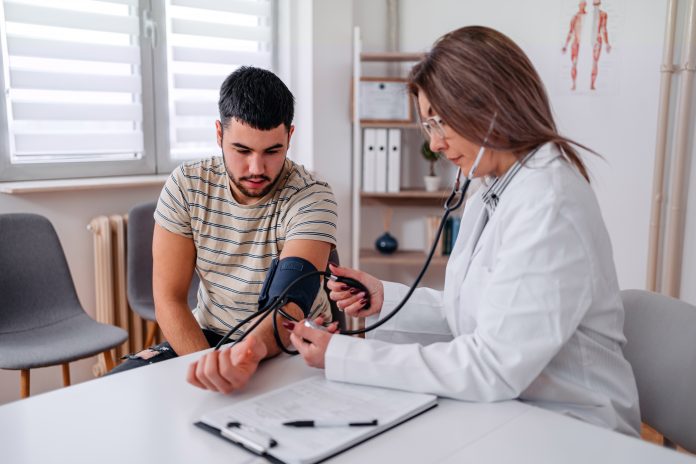
A recent study from Johns Hopkins Medicine reveals that commonly used arm methods of positioning a patient’s arm during blood pressure screenings can lead to significant overestimations of blood pressure readings, potentially resulting in misdiagnoses of hypertension.
The research, published today in JAMA Internal Medicine, evaluated three arm positions commonly used during blood pressure measurements: an arm supported on a desk, one resting on a lap, and an unsupported arm hanging at the patient’s side. Researchers discovered that using lap support led to an overestimation of systolic pressure by nearly 4 mmHg, while an unsupported arm resulted in an overestimation of about 7 mmHg.
Senior author Tammy Brady, MD, PhD, medical director of the pediatric hypertension program at Johns Hopkins Children’s Center said that arm position makes a “huge difference” when it comes to accurate measurements. This study reinforces the necessity of following clinical guidelines, which call for firm support for the arm during blood pressure readings and adhering to clinical guidelines.
According to the American Heart Association, nearly half of U.S. adults—approximately 116 million—have hypertension, a condition that increases the risk of serious health issues such as stroke, heart attack, and other cardiovascular diseases. Hypertension often presents with minimal or no symptoms, making early and regular blood pressure screening an effective tool for identifying and managing the condition. Lifestyle changes, including weight management, dietary adjustments, and physical activity, are typically recommended alongside medication for these patients.
Current guidelines from the American Heart Association spell out key factors needed to obtain accurate readings. These include proper cuff size, back support, feet squarely on the floor, and positioning the arm on a stable surface such as a desk or table, with the cuff at mid-heart level. However, the study shows that blood pressure is frequently measured with patients seated on exam tables without adequate arm support. In some cases, clinicians may hold up the patient’s arm or the patient may rest their arm in their lap.
For their study, the Johns Hopkins team recruited 133 adult participants (78% Black and 52% female) from August 2022 to June 2023 ranging in age from 18–80. Participants were randomly assigned to different arm positioning groups, and measurements were taken during a single visit. Each individual underwent a five-minute rest period after walking for two minutes, simulating a typical clinical scenario. Blood pressure was measured using an upper arm cuff sized according to individual measurements.
The results indicated that the highest systolic blood pressure readings occurred when the arm was unsupported or positioned on the lap. Specifically, an unsupported arm resulted in an overestimation of systolic pressure by 6.5 mmHg and diastolic pressure by 4.4 mmHg.
“If you are consistently measuring blood pressure with an unsupported arm, and that gives you an overestimated BP of 6.5 mmHg, that’s a potential difference between a systolic BP of 123 and 130, or 133 and 140—which is considered stage 2 hypertension,” said study author Sherry Liu an epidemiology research coordinator at the Johns Hopkins Bloomberg School of Public Health.
While the researchers caution that their findings may primarily pertain to measurements taken with automated blood pressure devices, they stress the importance of adhering to standard clinical blood pressure measurement practices. Brady also noted that patients can take an active role in monitoring their blood pressure both in clinical environments and at home.





